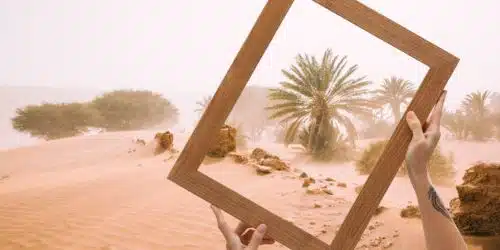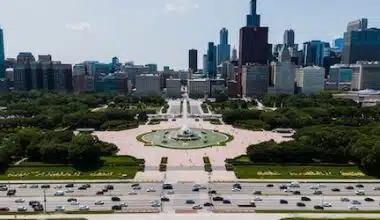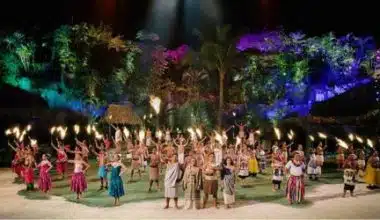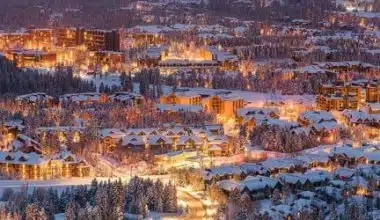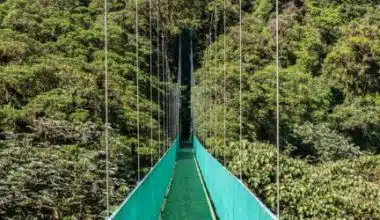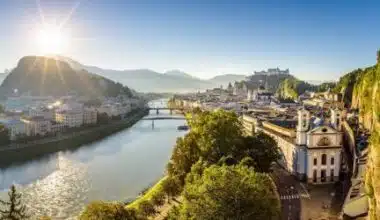Dubai’s iconic man-made islands stand as a testament to human ingenuity and ambition. In Dubai, the most populous and affluent city in the United Arab Emirates, a number of man-made islands have been constructed. It is designed to increase rental space while also getting the country ready for the impending oil supply shortage that it will eventually face. The desert country is renowned for its audacious architectural feats, and its man-made islands are no exception. These innovative engineering projects aim to boost coastal real estate and tourism, with Palm Jumeirah being the most successful. This writing puts together a clear description of Dubai’s man-made islands.
Dubai Man-Made Islands
Dubai is known for its impressive man-made islands, which were constructed to create more coastal real estate and boost tourism. These islands were built using innovative engineering techniques and have become iconic landmarks in the city.
Some of the most famous man-made islands in Dubai include
#1. Palm Jumeirah
Palm Jumeirah is the most successful of the three Palm Islands. It is extensively developed and hosts numerous businesses, hotels, and housing units, ranging from apartments to large, single-home residences. Palm Jumeirah serves as a luxury destination for wealthy individuals from all over the world.
#2. Palm Jebel Ali
Palm Jebel Ali was planned to be another palm-shaped island similar to Palm Jumeirah. However, due to the property market downturn in Dubai, the project was put on hold, and there are currently no plans to resume work on Palm Jebel Ali.
#3. Deira Islands
Formerly known as Palm Deira, the Deira Islands comprise four artificial islands and were also intended to be a tourist destination with shopping malls, resorts, and hotels. One attraction, Hotel Riu Dubai, has already opened on the Deira Islands in December 2020.
#4. The World Islands
The World Islands is a unique project that aims to recreate the map of the world using 300 small islands. Each island represents a different country or region. However, the development of The World’s islands has faced challenges, and many of the islands remain undeveloped.
#5. Bluewaters Island
Bluewaters Island is another impressive man-made island in Dubai. It features hotels, residential buildings, restaurants, shops, and entertainment attractions. One of the main attractions on Bluewaters Island is the Ain Dubai, which is the world’s largest observation wheel.
#6. The Heart of Europe
The Heart of Europe is a group of six small man-made islands that are designed to resemble various European countries. Each island represents a different European nation and will feature architecture, culture, and experiences inspired by that country. The Heart of Europe aims to create a unique tourist destination with luxury resorts, villas, and entertainment options.
#7. Dubai Waterfront
Dubai Waterfront is a massive development project that includes a series of man-made islands and canals. It was planned to become one of the largest waterfront developments in the world, spanning an area of 1.4 billion square feet. However, due to the global financial crisis in 2008, the project faced significant challenges and has been put on hold.
#8. The Lagoons
The Lagoons is a waterfront development project in Dubai that includes the creation of several man-made islands. It aims to provide a mix of residential, commercial, and leisure spaces. The project is still under development and will become a vibrant community in the future.
#9. Dubai Creek Harbor
Dubai Creek Harbor is a large development project that includes the construction of man-made islands along the Dubai Creek waterfront. It is set to become a new district with residential, commercial, and cultural attractions. The centerpiece of the project is the Dubai Creek Tower, which is set to be one of the tallest towers in the world.
#10. Jumeirah Islands
Jumeirah Islands is a residential development consisting of 50 man-made islands, each featuring luxury villas surrounded by artificial lakes. It offers a tranquil and exclusive living experience for residents.
Benefits of Dubai Man-Made Island
Dubai’s man-made islands offer several benefits. These benefits have contributed to the growth and transformation of Dubai into a world-renowned destination, attracting visitors, residents, and investors from around the globe.
The benefits include:
#1. Increased Land Availability
Dubai’s coastline was extended through the creation of these islands, providing additional land for the development and expansion of the city.
#2. Tourism and Economic Growth
The man-made islands are designed to attract tourists and boost the local economy. They offer a range of attractions, including luxury hotels, resorts, entertainment venues, and shopping centers, which contribute to the growth of the tourism industry in Dubai.
#3. Luxurious Living
The islands provide exclusive residential areas with waterfront properties, offering residents a luxurious and prestigious lifestyle.
#4. Iconic Landmarks
The man-made islands have become iconic landmarks for Dubai, contributing to the city’s unique skyline and global recognition.
#5. Environmental Conservation
The creation of these islands has allowed for the preservation of natural habitats and marine ecosystems by minimizing the impact on existing coastal areas.
#6. Job Creation
The development and maintenance of these islands have created employment opportunities in various sectors, including construction, hospitality, tourism, and service industries.
#7. Urban Planning and Design
The construction of man-made islands allows for strategic urban planning and design, ensuring the integration of infrastructure, transportation, and public spaces for a well-organized and functional cityscape.
#8. Investment Opportunities
The man-made islands have attracted significant investment from individuals and businesses, offering opportunities for real estate development, hospitality ventures, and commercial activities.
#9. Architectural Innovation
The development of these islands showcases Dubai’s commitment to architectural innovation and pushing the boundaries of engineering and construction techniques.
#10. International Recognition
Dubai’s man-made islands have gained international attention and admiration, putting the city on the map as a global leader in ambitious urban development projects.
Cons of Dubai Man-Made Islands
The cons of Dubai’s man-made islands include:
#1. Environmental Impact
The construction of man-made islands can have a significant impact on marine ecosystems and coastal environments. The process of dredging and reclaiming land from the sea can disrupt natural habitats, harm marine life, and contribute to coastal erosion.
#2. Cost and Sustainability
Building and maintaining man-made islands is an expensive endeavor. The construction requires significant financial resources, and the long-term maintenance of the islands can also be costly.
#3. Delayed Completion and Abandoned Projects
Some of the man-made islands in Dubai have faced delays in completion or have been abandoned altogether. This can lead to financial losses for investors and can impact the overall development plans for the islands.
#4. Potential for Sinking and Erosion
There have been concerns about the stability of the man-made islands, particularly about sinking and erosion. Reports have surfaced suggesting that some of the islands are sinking into the sea, and coastal erosion can also be a problem.
#5. Limited Accessibility
While Palm Jumeirah is well-connected to Dubai’s mainland, offering various amenities and accommodations, other man-made islands may have limited accessibility. This can make it challenging for residents and visitors to access the islands and can impact their overall appeal and functionality.
#6. Infrastructure Challenges
Developing and maintaining the necessary infrastructure for man-made islands can be a complex task. Building roads, bridges, utilities, and transportation systems to connect the islands with the mainland requires significant investment and engineering expertise.
#7. Overcrowding and Traffic Congestion
The popularity of Dubai’s man-made islands, especially Palm Jumeirah, can lead to overcrowding and traffic congestion, particularly during peak tourist seasons. Limited road access and parking facilities can exacerbate these issues, impacting the quality of life for residents and the overall visitor experience.
Man-made islands in Dubai are often associated with luxury and opulence, attracting high-end residential and commercial developments. This can contribute to social and economic inequality, as the cost of living on these islands can be significantly higher than other parts of the city.
#9. Water Shortages
Dubai, like many other arid regions, faces water scarcity challenges. The construction and maintenance of man-made islands require substantial water resources. This increased demand for water can strain local supplies, potentially exacerbating water shortages in the region.
#10. Risk of Natural Disasters
Man-made islands, being located in coastal areas, are vulnerable to natural disasters such as storms, hurricanes, and rising sea levels. These islands may require additional measures and investments to mitigate the risks associated with these events and ensure the safety of residents and visitors.
Tips To Guide Visitors During A Visit
To make the most of your visit to Dubai’s man-made islands, here are some tips:
#1. Dress code
Dubai follows a conservative dress code, so it is advisable to dress modestly and respect local customs while visiting the islands. Swimwear is generally acceptable on the beaches and at designated pool areas.
#2. Respect local customs
Dubai is a Muslim country, and it is important to respect local customs and practices. Avoid public displays of affection, be mindful of local sensitivities, and consume alcohol only in designated areas.
#3. Access Restrictions
Some areas of the man-made islands may have restricted access, such as private residential areas or exclusive resorts. Respect any signage or instructions regarding restricted areas.
#4. Plan
Research the man-made islands you want to visit, such as Palm Jumeirah or Bluewaters Island, and familiarize yourself with the attractions, activities, and facilities available. This will help you prioritize your time and make the most of your visit.
#4. Visit Iconic Landmarks
Make sure to visit the iconic landmarks on the man-made islands, such as the Atlantis Hotel on Palm Jumeirah or Ain Dubai on Bluewaters Island. These landmarks offer unique experiences and stunning views of the surrounding areas.
#5. Water Activities
Take advantage of the islands’ coastal locations and enjoy water activities like swimming, snorkeling, or jet skiing. Many resorts and beach clubs on the islands offer equipment rentals and guided tours.
#5. Dining and Shopping
Dubai’s man-made islands are known for their wide range of dining and shopping options. Explore the various restaurants, cafes, and retail outlets to experience the island’s culinary delights and indulge in some retail therapy.
#6. Boat Tours
Consider taking a boat tour around the man-made islands to get a different perspective and enjoy panoramic views. Several tour operators offer boat tours, allowing you to admire the islands’ architecture and skyline.
#7.Timing
Keep in mind that Dubai can get quite hot during the summer months, so plan your visit accordingly. It’s often more comfortable to explore the islands during the cooler months from October to April.
What Happened To Dubai’s Man-Made Islands?
Dubai’s man-made islands, particularly Palm Jumeirah, have seen significant development and are now home to various businesses, hotels, and residential units. However, the other man-made islands, like The World Archipelago, remain largely undeveloped and desolate. Economic challenges, high costs, and environmental concerns have hindered the full realization of these projects. While Palm Jumeirah thrives as a luxury destination, the other islands have not reached their intended potential and currently remain underdeveloped.
Are The World Islands In Dubai Man-Made?
Yes, The World Islands in Dubai are man-made. They are an archipelago of small artificial islands constructed in the shape of a world map). The islands were created using sand dredged from Dubai’s shallow coastal waters). The project was developed by Nakheel Properties and was originally conceived by Sheikh Mohammed bin Rashid Al Maktoum, the ruler of Dubai). Construction of The World Islands was carried out by two Dutch specialist companies, Van Oord and Boskalis, the same companies that created Palm Jumeirah.
Who Made Dubai Man-Made Islands?
The man-made islands in Dubai were developed by Nakheel, a real estate developer in the United Arab Emirates. The visionary behind these projects is Sheikh Mohammed bin Rashid Al Maktoum, the Prime Minister of the UAE and the Emir of Dubai. Nakheel was responsible for the construction and development of iconic projects such as Palm Jumeirah, Palm Jebel Ali, Deira Islands, The World, and Bluewaters Island. These projects were designed to attract tourism and enhance Dubai’s coastal real estate offerings.
How Many Man-Made Palm Islands Are There In Dubai?
There are three man-made palm islands in Dubai: Palm Jumeirah, Palm Jebel Ali, and Palm Deira. Palm Jumeirah is the most developed of the three, while Palm Jebel Ali is still under development. Palm Deira received its first visitors in December 2020.
Why Did Dubai Decide To Build The Islands?
Dubai’s man-made islands were constructed to create more coastal real estate and to eliminate the emirate’s reliance on dwindling oil supplies. However, the construction of these islands has significantly impacted ocean sediment and wildlife in the surrounding area.
Who Is The Owner Of Palm Island?
The Dubai government-owned real estate company Nakheel is the owner of Palm Island in Dubai.
Conclusion
Dubai’s man-made islands face environmental, cost, and sustainability issues. They can disrupt marine ecosystems, contribute to coastal erosion, and have been abandoned or delayed in completion. They also face potential sinking and erosion risks, limited accessibility, infrastructure challenges, overcrowding, social and economic inequality, water shortages, and the risk of natural disasters. These islands are often associated with luxury and opulence, posing challenges for residents and visitors. These man-made islands offer a range of attractions for visitors, including the Aquaventure Waterpark and Lost Chambers Aquarium on Palm Jumeirah and boat tours around the World Islands.
- THE BEST HOTELS IN WEST PALM BEACH IN 2023-2024
- BEST VOLUNTEER ABROAD PROGRAMS FOR 2023
- Best Scenic Road Trips for Families: A Guide to Memorable Journeys
- 17+ Most Beautiful Cities in the World 2023, Revealed (Updated)
- Top 10 Road Trips for Solo Explorers: Embrace the Journey
